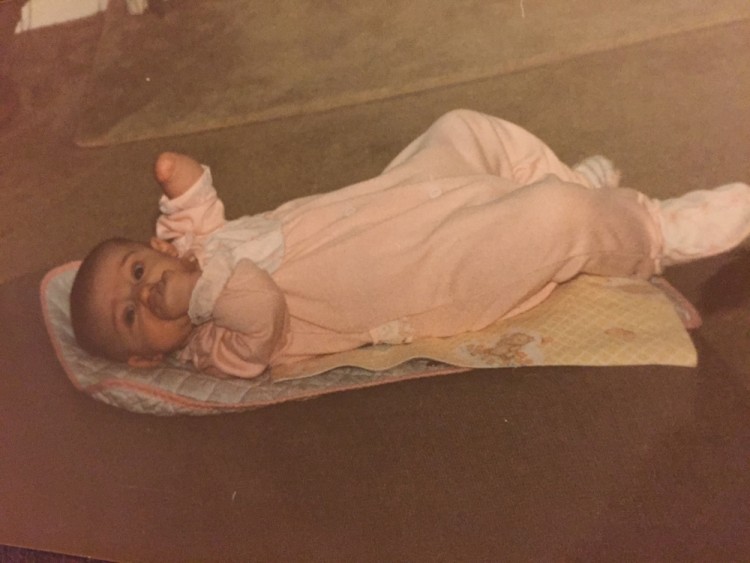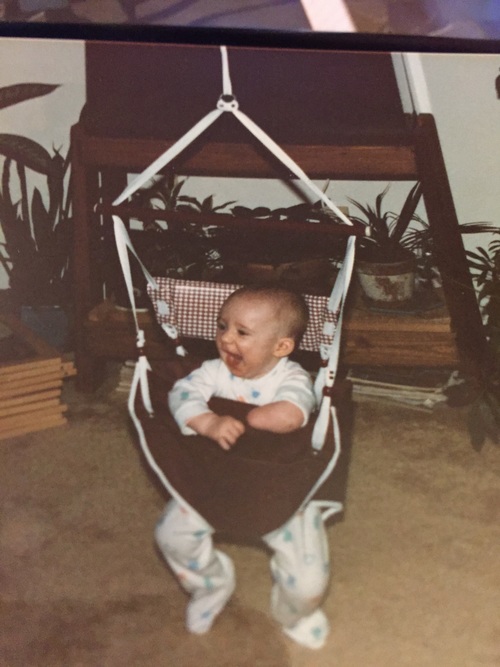Why I'm Saying 'Good Riddance' to My Prosthetic Arm
I was born in 1986, which (I’m told) was a pretty wild time. Cocaine was all the rage, there was a little incident at this place called Chernobyl, Mark Harmon was the sexiest man alive, and “Top Gun” was released. And when a baby was born without her hand, the doctors thought it would be a great idea to amputate the toes off of one of her feet and install them as fingers on her stump. Like I said, drugs were cool back then.

While still fairly surprised that their first child made her grand entrance sans a major body part, my parents had the fortunate wherewithal to politely say “F*** no!” They bundled me up and took me home with all ten toes in their factory original positions.
Yet, there still remained a “problem” that needed to be solved. Humans should have two hands. How could you possibly survive in the world without one? Thus, just past the age of 1, I was given my first prosthetic. A hook. Now, hooks are great for two reasons: they’re cheap, and they’re durable. However, if you outfit a toddler with a giant metal pokey thing, don’t be surprised if they beat the ever living s*** out of all your nice furniture and floors.
Hooks also have limited range of use, only look cool on Halloween, and depend on a harness system that wraps around your shoulders and is decidedly not cool. At around 5 or 6, I received my first myoelectric prosthetic – a robot hand. It was heavy. I had to plug it in each night to charge. Like the hook, all it could do was open and close and it only sort of looked like a “real” hand.

It was around this time that I started to become attached to my prosthetic, my “helping hand.” Even though it was functionally no more than a dead weight with a battery, I needed it. I couldn’t leave the house without it. The attachment grew worse when in middle school I switched to a passive cosmesis, which is essentially just a mannequin hand designed to look as real as possible, down to the skin tone and nails. It’s also worth noting that I was (am?) a somewhat scatter-brained individual and never put things where they belong. I would regularly “lose” my arm somewhere in the house. For something I needed every day, I was pretty crap at keeping track of it.
Let me clarify “needing” it – I don’t need my prosthesis at all. In fact, I’m more abled without it. The emphasis isn’t the prosthesis, but the “cosmesis” – it’s cosmetic. When I wear it, I get fewer stares, fewer sideways glances, fewer “How did you break your… oh.”
Fake arms are sweaty. Sockets get stinky. Hot spots develop. They break. They’re expensive. I can do more without it. So why do I still wear one? Why, as a teenager, would I fake sick and not go to school if I couldn’t find my arm to wear? Why would I change plans around having or not having my prosthetic?

I wish I had a definitive answer, but the closest I can get is that the pain, sweat, and discomfort was worth it to avoid the stares and awkward conversation. This shouldn’t be confused with not being proud of who you are – if someone walks up to me in the grocery store and says “Hey! You’re missing your hand!” I’ll answer “Yeah! Let me tell you all about it!”
Sometimes though, you just want to be a “normal” human being and not have to deal with people when you go to get a gallon of milk. Without my arm, I stand out all the time. I always have to have a reply ready to inevitable questions. If I’m cranky I’ll even have my “Oh no, I didn’t notice!” deadpan ready to go. With my arm, even when it’s green and grimy and has broken fingers, people’s brains will glance me over and think ‘Two eyes, two ears, two hands…check, move on.”
I received my last prosthesis when I was 22 and aged out of the Shriner’s Hospital for Children’s program. I loaded up with a few of them, but as the years went by they broke, wore out, my muscles changed and the sockets don’t fit that great anymore. I don’t need my arms, plus I’m broke/cheap, and replacing my arms seemed less and less of a priority as time went on. Slowly, I stopped wearing my arm to the grocery store. Then I stopped wearing it going out to dinner. In the last two years, I stopped wearing it entirely except for when I’m at work – and I can sense even that is coming to an end.
A few months ago I went to dinner right from work and was still wearing my arm. My friend Dan looked me up and down oddly, finally saying “Dude, you have two hands right now. That’s freaking weird.”
After 28 years, I’m losing my arm. It’s been more of a crutch than an asset, more of a hindrance than a helper. My obituary for my arm will be short: “The good times were few, mainly limited to the look on teacher’s faces when it would come flying off during games of Red Rover.” I don’t want to be defined by a hunk of plastic. I don’t want this forgery of a hand to be a part of me, because it echos a sentiment that I am somehow lesser without two hands.
Good riddance.

